What Are The Best Yoga Exercises For Parkour? (Revealed!)
In its true essence, parkour requires the practitioners to move from one to the other efficiently without any assistance.
Often described as the art of movement, parkour is deeply rooted in freerunning, strength training, gymnastics, and many dance elements.

The best yoga poses for parkour are reverse prayer, Parsva Balasana, Prasarita Padottanasana C, Anjaneyasana, downward-facing dog, and the lizard pose. These yoga poses build your muscles, relieve chronic pain, release stress, and strengthen your core.
The athletic expression of parkour requires not only physical strength for effective movements but also a soothing mindset, so when you stand on top of a 7-foot wall and look down, you don’t slack off.
This guide explains some of the best yoga exercises for parkour that will train both your mind and body to run, jump, and climb like a daredevil. Read on.
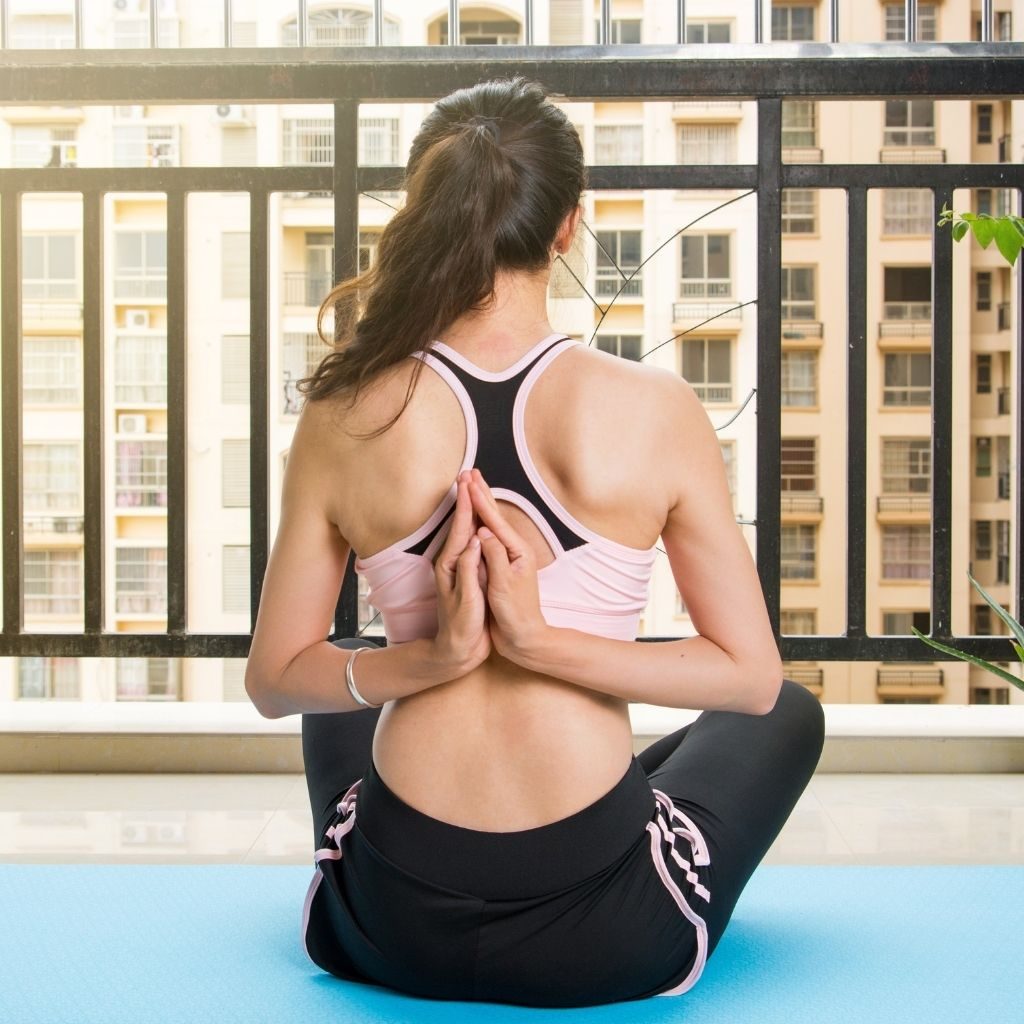
1. Paschima Namaskarasana or Reverse Prayer
Here’s how to do the reverse prayer:
- Sit on your yoga mat comfortably and float your arms downward to any side of your body.
- Bend your elbows to reach your arms towards your back.
- Press your palms comfortably together on your spine just like you would do in a prayer position.
- Try aiming for the highest point up until your spine as possible.
- Then, hold five deep breaths.
- You can then alternate the position by pressing the fingers together only.
How does Paschima Namaskarasana improve your parkour skills?
Paschima Namaskarasana is a shoulder opening asana that targets the muscle tightness in our upper back. Regular reverse prayer exercises can prevent you from having a rounded back and tight pecs, which may eventually impact your performance.
Freerunners or those who practice hardcore parkour require a regular stretching routine, as repetitive training can cause them to experience rigid posture and tight muscles.
This exercise, however, opens up the tightness in your back shoulders by pulling the arms backward.
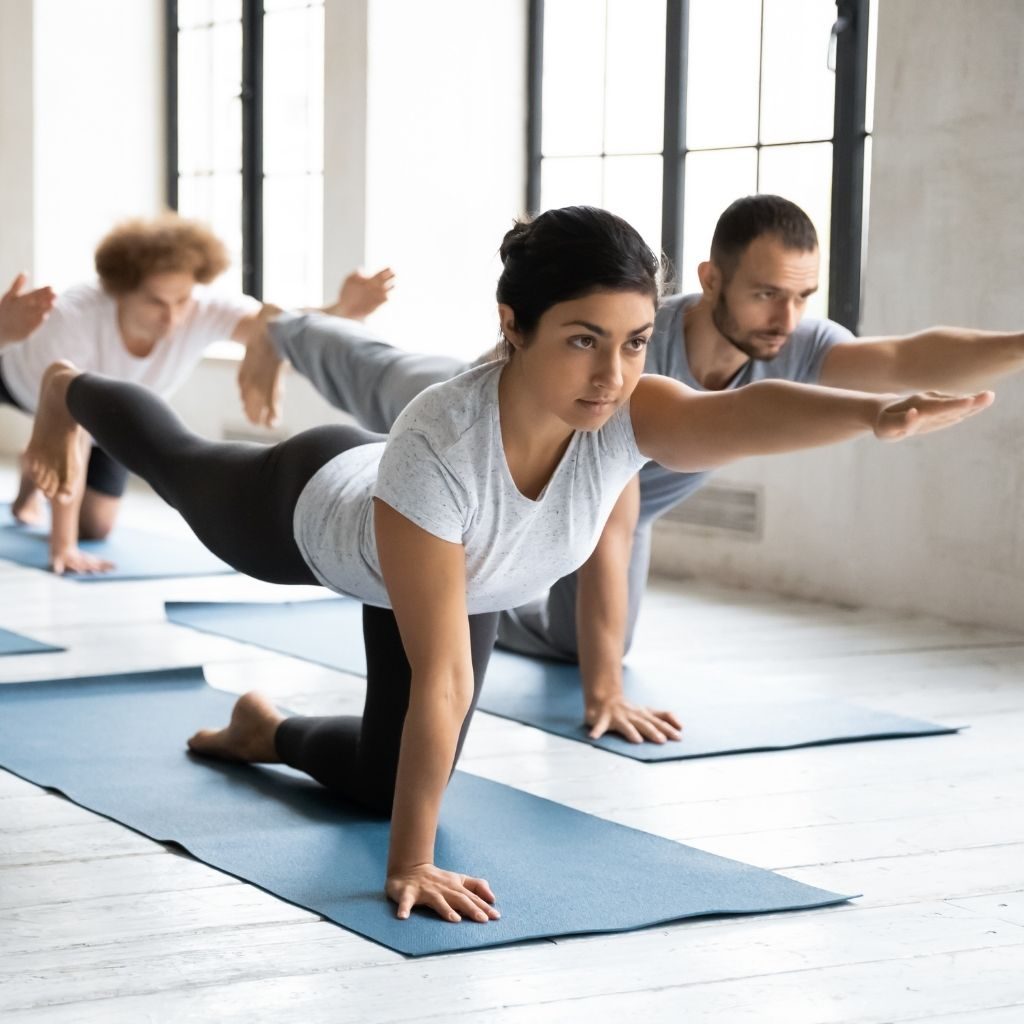
2. Parsva Balasana or Thread the Needle
Follow these steps to do Thread the Needle:
- Place your hands and knees on the floor.
- Make sure your hips lie over your knees, and your palms are placed directly under your shoulders.
- Keep your fingers flat on the floor in such a manner that they face forward. This is the tabletop position.
- Once you are in the position, point your left arm up towards the ceiling as you inhale.
- Upon exhaling, take your arm right under your arm and bring your left shoulder onto the mat.
- Then, place the left side of your head on the mat while keeping your hips lifted off the floor.
- Release the tension in your shoulders and make sure to breathe naturally.
- Keep this position from 30 to 90 seconds.
- Then, push back the tabletop pose to exit the pose.
- Repeat all the steps by switching the sides.
How does Parsva Balasana improve your parkour skills?
Parsva Balasana is a core stabilizer. It is known for reducing the tension and stress in your muscles, calming the mind, and enhancing your balance. If you are particularly experiencing chronic stress in your upper body, shoulder, and neck, Parsva Balasana is the perfect posture.
You can also learn to balance your body with ease and effort as inhaling causes the spine to lengthen while exhalation relaxes your body.
According to yogis, this asana can also make you connect and grounded to the earth, giving you clarity, security, and relief from your everyday struggles.
Therefore, if you are stressed out by the dangers of parkour or feel particularly tired after the workout, this asana can ease your mind.
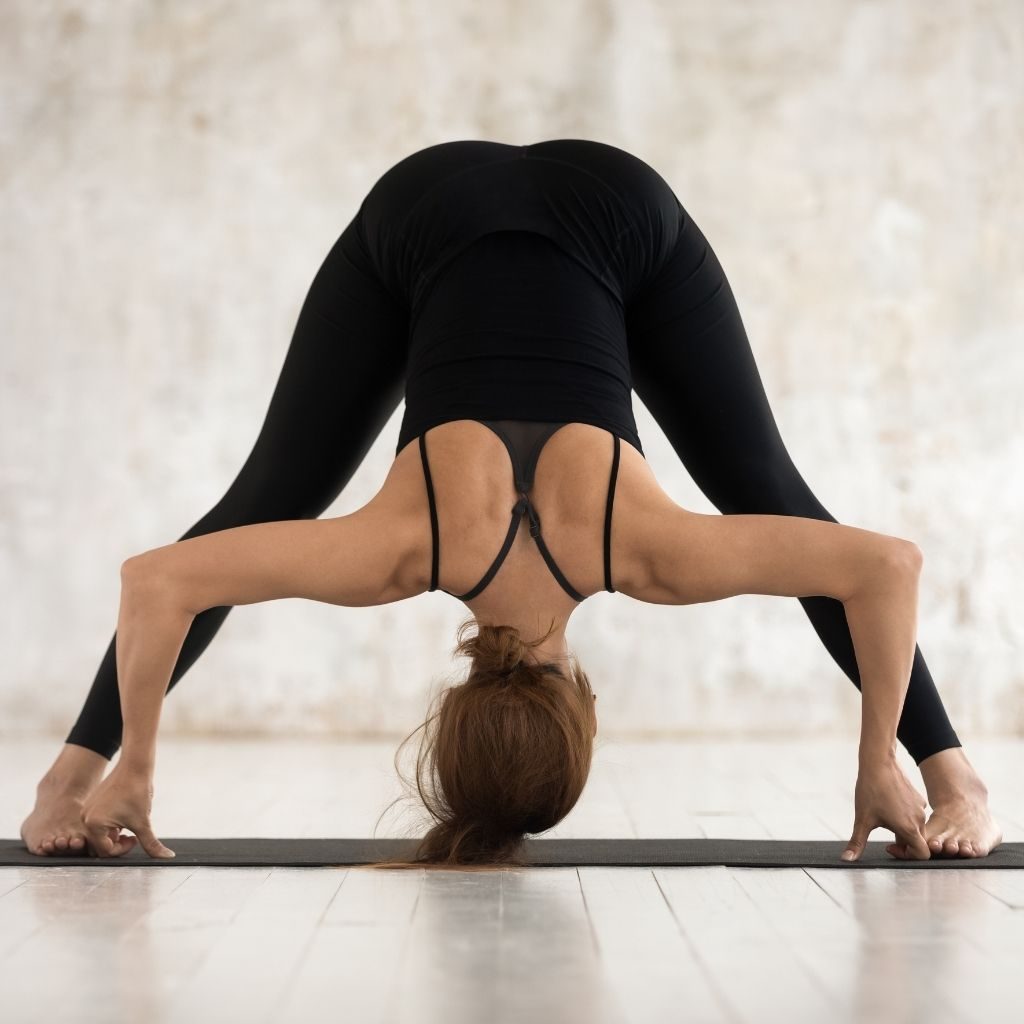
3. Prasarita Padottanasana C or Wide Leg Forward Fold with a Clasp
For the wide leg forward fold with clasp, here’s what you need to do:
- Start in a wide-legged position on the mat.
- Place your fingers behind your back and interlace them tightly.
- As you inhale, squeeze your shoulder blades together.
- Upon exhalation, bring your body forward and fold it as you take your spine downward.
- Make sure your fingers are interlaced throughout.
- Bring your hands over and up your head, keeping them as far as possible.
- Push your stomach inwards towards your thighs.
- Make sure to lengthen your spine and keep your neck released from any pressure.
- Stay in the position for 5 deep breaths.
- Then, release your hands and breathe slowly as you lift your back up to stand.
How does Prasarita Padottanasana C improve your parkour skills?
Prasarita Padottanasana C strengthens the spine, calves, hips, lower back, and hamstrings. As part of this asana, the arm positions stretch the shoulders, upper back, forearms, and wrists.
Accordingly, this pose can help you release the tension in your shoulders and the neck.
It provides relief from the mild backaches, and the slow breathing exercise also releases anxiety, stress, and depression.
It can further tone the abdominal organs and improve digestion in the body.
The pose overall soothes the nervous system while preparing the body for deeper asanas and workout sessions.
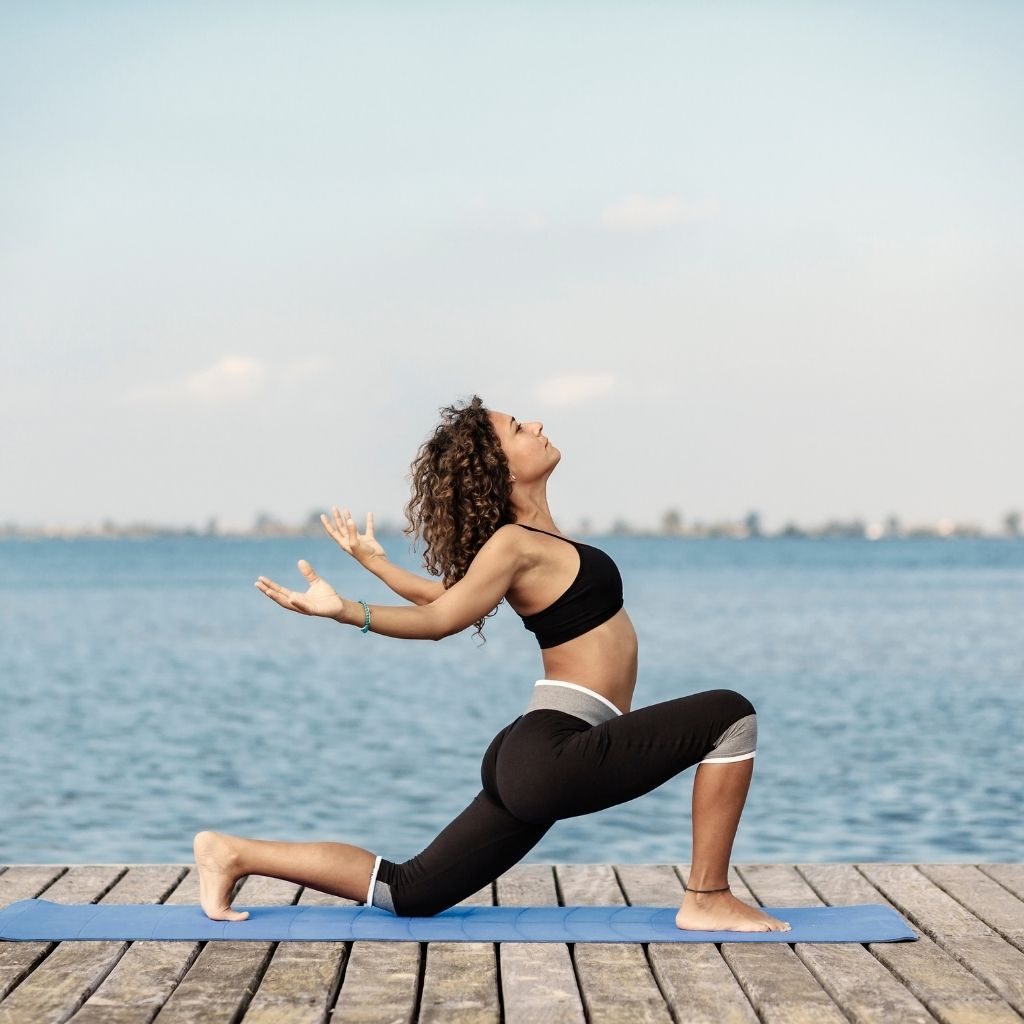
4. Anjaneyasana or Low Crescent Lunge with Quad Stretch
Here’s how you can practice Anjaneyasana:
- Start in a lunge or Tadasana position, keeping your feet hip-distance apart.
- Then, start lowering your back knee towards the floor.
- Keep your left knee lifted over the left ankle, so your skin is straight.
- Keep your right foot at the back as much as possible, ensuring the foot’s heel is on the top of its ball.
- Then, bend your right knee towards the ground.
- When bending, don’t stretch your knee a lot, so your knee is not placed too far forward on the ground.
- After this, untuck your toes and keep the right foot on the ground.
- Move your hands over the hips, keeping your torso straight up and down.
- Then, start shifting the hips forward and down as you push with your hands. Eventually, your front knee will bend and come in front of your ankle.
- Stretch your arms up as much as you can with the palms facing each other.
- Keep looking forward and lengthen your neck.
- Activate your posterior chain by pushing down using your back foot and deepen the backbend.
- Finally, tone the belly as you move the arms back to the position. Push down using the back foot, and lift through the chest.
How does Anjaneyasana improve your parkour skills?
Anjaneyasana can help stretch the hips, strengthen the hip extensors, and open the hip flexors. It can stretch your psoas muscles while opening your chest and shoulders. Furthermore, it mainly strengthens the muscles that support the knee, making your movements during parkour more flexible.
There will be days when your back might be excruciating. Flexibility in the body also varies from one day to another.
Therefore, it is crucial to focus on your backbends during practice as well.
Since your muscles are also involved heavily in the exercise, it strengthens the hamstrings, quadriceps, and gluteus maximus.
As it engages the deep core muscles, Anjaneyasana further creates stability and improves balance.
Similarly, lifting the arms and the torso strengthens the back, arms, and shoulders. And in case you are experiencing pain due to sciatica, this asana can even alleviate this pain.
According to one scientific research, Anjaneyasana is one of the best exercises to strengthen your lower body. As you use your body weight, your muscles, especially in the lower limb, are activated.
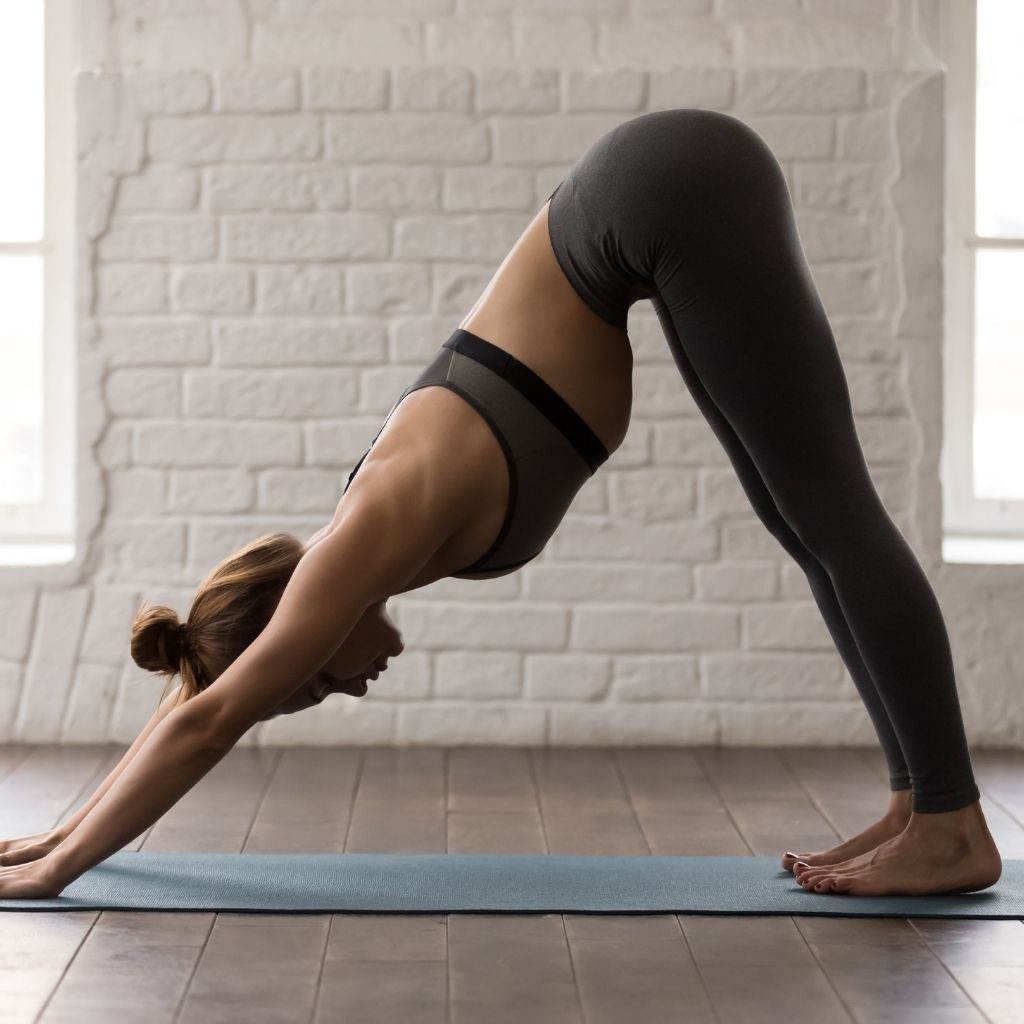
5. Adho Mukha Svanasana or Downward Facing Dog
Here are the steps you can follow for Adho Mukha Svanasana:
- Start with raising your arms over your head.
- Fold forward into Utthanasana or Deep Forward fold by placing your hands beside your feet.
- Make sure to inhale as you go into this position.
- Then, raise your chest away from your thighs as you inhale again.
- On exhalation, place your right foot back. Do the same with your left foot.
- Keep the feet and hands at least 90 cm apart.
- As you put your feet hip-width apart, point your fingers forward.
- Place your palms evenly on the floor and bring your chest closer to your thighs.
- Place your buttocks upward and lengthen your spine.
- Once you have attained the maximum upward lengthening of the spine, open the backs of the legs.
- Press your heels down towards the ground and keep your knees straight.
- Then, rotate your shoulders away from your body, ensuring the upper arms are away from the ears.
- Pull your head closer to the floor while keeping the back straight.
- Then, look towards the naval as you tuck in the chin.
- Hold the position for 10 to 30 breaths. Make sure to breathe slowly and smoothly.
How does Adho Mukha Svanasana improve your parkour skills?
Adho Mukha Svanasana is a mild inversion, which means it acts in reserves to the forces affecting your spin and because more blood flow towards your brain. It opens up the shoulders and chest, eventually straightening your vertebrae for parkour movements.
Upon practicing the downward-facing dog daily, it can also help relieve chronic pain in your back and shoulders.
Furthermore, this asana helps improve posture by stretching the lower body and lengthening the spine.
It is also a weight-bearing exercise, which can help build strength in your arms and shoulders.

6. Utthan Pristhasana or the Lizard Pose
You can practice Utthan Pristhasana in the following steps:
- Start in the downward-facing dog pose.
- Place your right between your hands.
- Make sure your foot is positioned forward towards the mat’s edge. Your foot will seem wider than your shoulders.
- Loosen your hips, and they will seem to grow heavy while settling down and forward.
- Slowly bring your hands forward until they come down to the forearms.
- You can then place your hands in a prayer position or rest the palms in such a manner that they face down on the mat.
- Try extending to lengthen the spin.
- Make sure your right knee is hugging towards the midline. Keep your left knee lifted. Hold the position for a few seconds.
- Then, pull the shoulder blades together.
How does Utthan Pristhasana improve your parkour skills?
Utthan Pristhasana is a great hip and groin opener. It is a versatile pose that strengthens the thigh muscles located inwards on your front leg. It can also release the tension in your neck, shoulders, and chest, which improves your parkour skills.
The pose also serves as a great warm-up exercise for deeper asanas such as the Hanuman and Pigeon pose.
You may also like 👉 Yoga vs Pilates as Complements to Golf, Crossfit, Running & Cycling
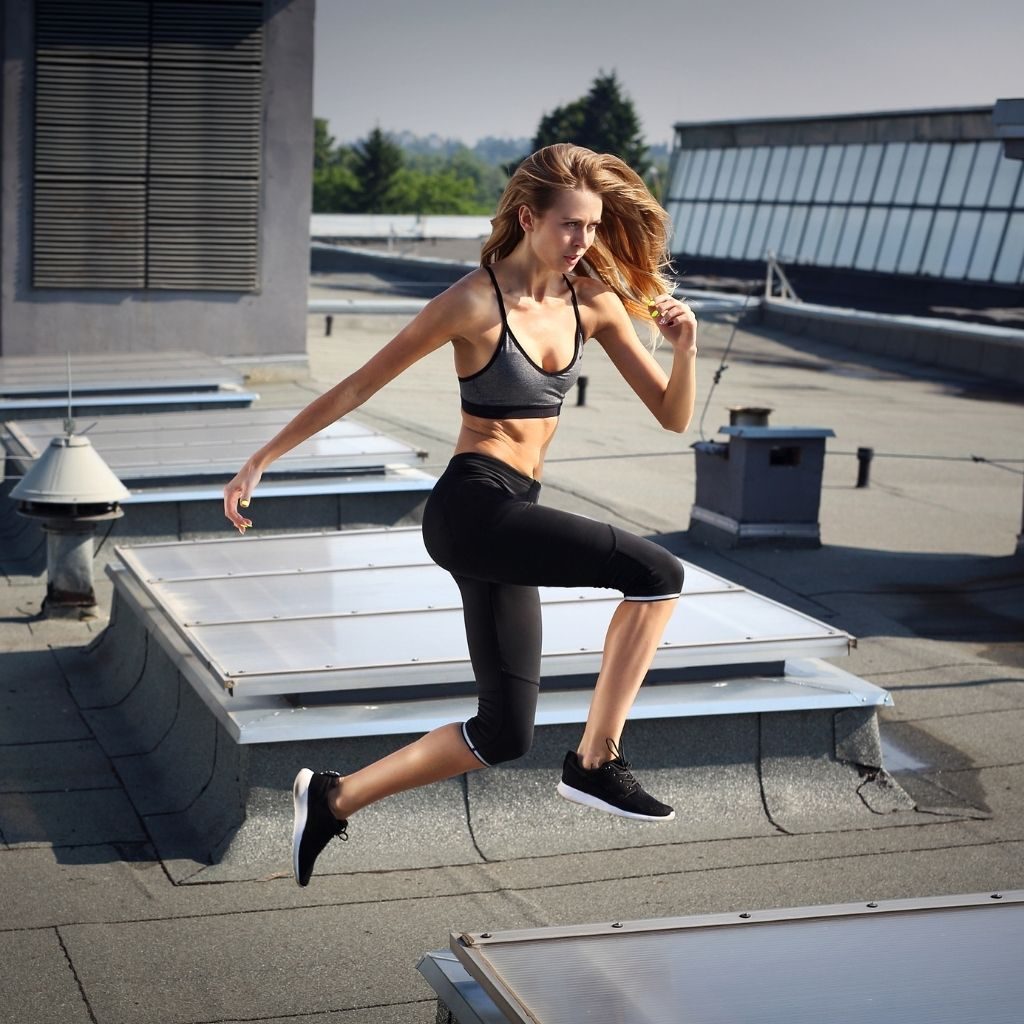
Conclusion
Parkour requires a lot of bodily strength and mental peace. Therefore, you must take part in relaxing exercises besides your challenging workouts to ease your mind and body.
The best yoga poses for parkour are reverse prayer, Parsva Balasana, Prasarita Padottanasana C, Anjaneyasana, downward-facing dog, and the lizard pose. These six yoga poses build your muscles, relieve chronic pain, release stress, and strengthen your core.
Whether you want to relieve chronic back pain or strengthen your core, these six asanas can make parkour easier for you.
You may also like: Yoga Vs Pilates For Back Pain

